Qashqai people: Meeting authentic nomads of Iran

This trip was sponsored by Key2Persia, who I had the chance to partner up with, in order to promote off the beaten track places within Pars Province. However, this is an honest review and all the opinions are my own
Moving with their flocks from the shores of the Persian Gulf in winter to the cooler mountains around Esfahan in summer, the Qashqai people are a nomadic group from Iran of Turkic origin who, mostly, still lead a traditional life, not very different from the way their ancestors used to.
When I was traveling in Iran, I had the chance to visit several nomadic camps and spend the night in one of them, in order to learn about the way they live.
This article contains an explanation of my experience with the nomads of Iran, as well as practical information to help you do the same.
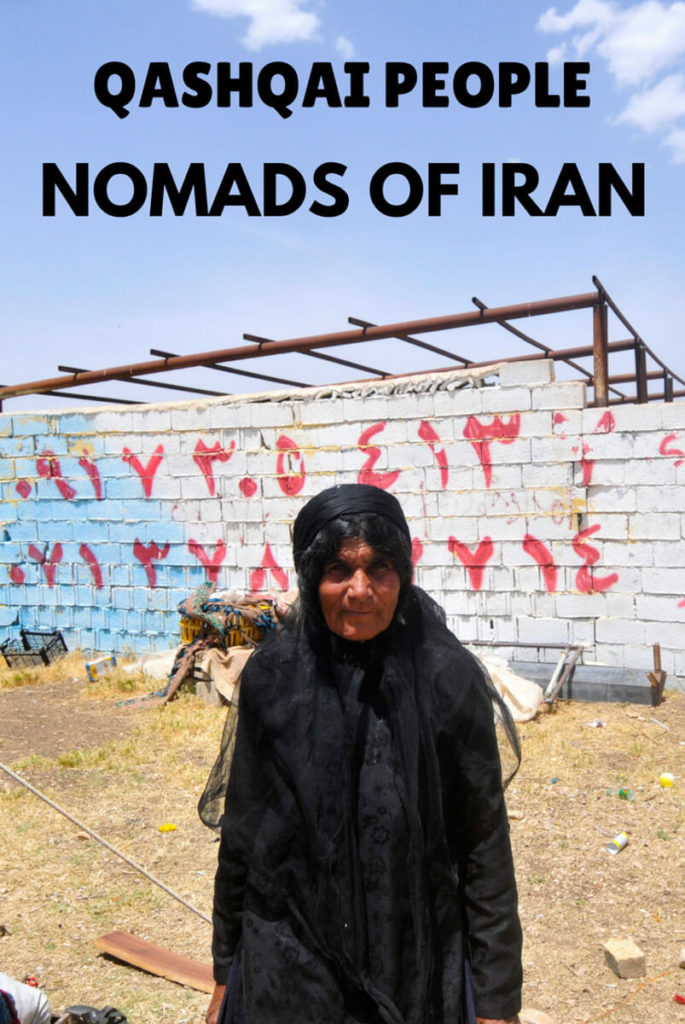
Today, it’s believed that, still, around one million of the people living in Iran are full-time nomads, representing a 1.25% of the total population.
This means that Iran has one of the biggest nomadic populations of any country, together with Asian countries such as Kyrgyzstan or Mongolia.
Moreover, Iran is so culturally and ethnically diverse that even its nomadic population is classified into different groups and tribes, the Qashqai people being, perhaps, the largest one.
The Qashqai nomads, also known as Ghashghaei, are a nomadic tribe originally from Turkey, who keep moving across the Zagros Mountains, a mountain range located in western Iran, which kind of draws the border with Iraq.
The Ghashghaei tribe’s main language is a Turkish dialect but, except for some of the oldest people, all of them can speak Persian fluently, which is the official language in the country.
Like most Iranians, they are Shia Muslims.
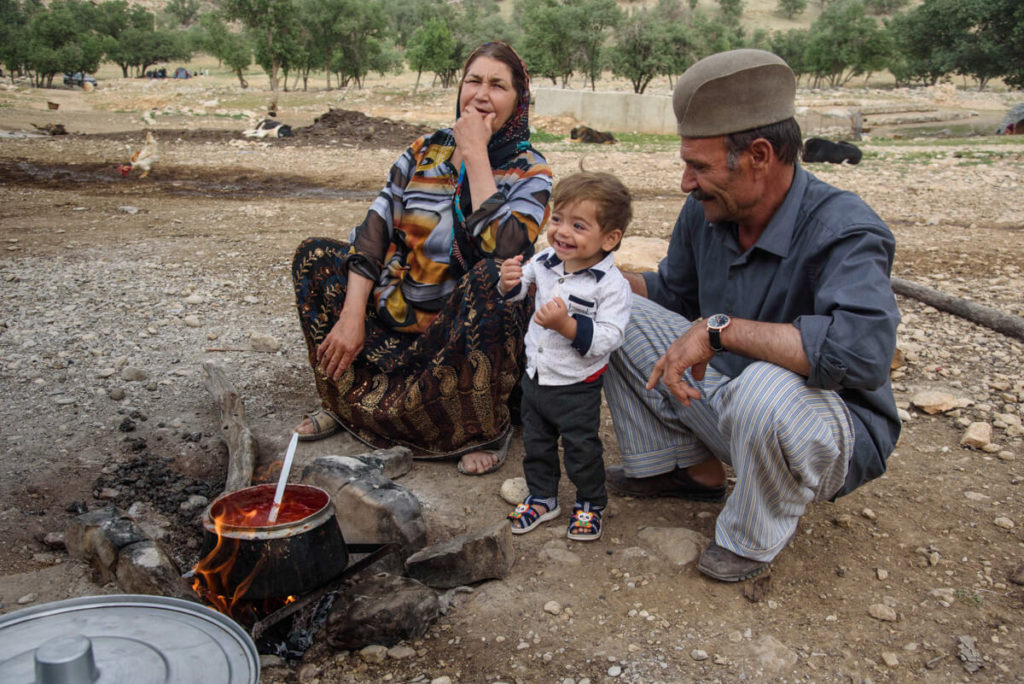
The migration of the Iranian nomads
It’s mandatory to have a travel insurance to get your visa on arrival in Iran.
Because of the sanctions, most insurance companies don’t provide coverage for Iran, but IATI Insurance does
Get your exclusive 5% discount if purchasing via this link.
Iran is so geographically diverse that, in one single region, you can find all sorts of climates, in just a couple of hundred kilometers.
For example, on the one hand, the area in the Persian Gulf has a very similar climate to the Arab Gulf monarchies, such as the United Arab Emirates, Saudi Arabia or Qatar.
In winter, these countries have one of the most pleasant winters that exist but, in summer, the heat becomes unbearable and the air extremely humid.
On the other hand, in the Zagros Mountains, whose southern part begins pretty much in the Persian Gulf, the weather becomes more mountainous and much cooler, many sections having really tough and freezing winters and, at the highest point, the altitude is 4,409 meters above sea level.
All of it in a short 400-kilometer strip. Pretty impressive, huh?
This is the main reason why, for centuries, this land has been inhabited by different nomadic groups, who have kept moving across the 400-kilometer strip.
In winter, they remain in the Persian Gulf and, when the weather becomes hot, they start moving north.
In spring and autumn, you may find the nomads of Iran in the mountains around Shiraz and, in summer, around Esfahan.

The tough life of the Qashqai tribes
The life of the Qashqai people is pretty tough.
Just imagine yourself camping every day, for the rest of your life. That’s pretty much what their life is about.
Every time they move, they need to pack all their stuff, move with their flocks and set up their camps again. The same goes over and over.
The nomads always need to get water from the river, rely on solar energy and are highly dependent on their flocks.
They are self-sufficient and their herds of sheep and goats are their main source of income. From these animals, they get meat, cheese, and milk and they also sell the newborns at the markets of the different cities.
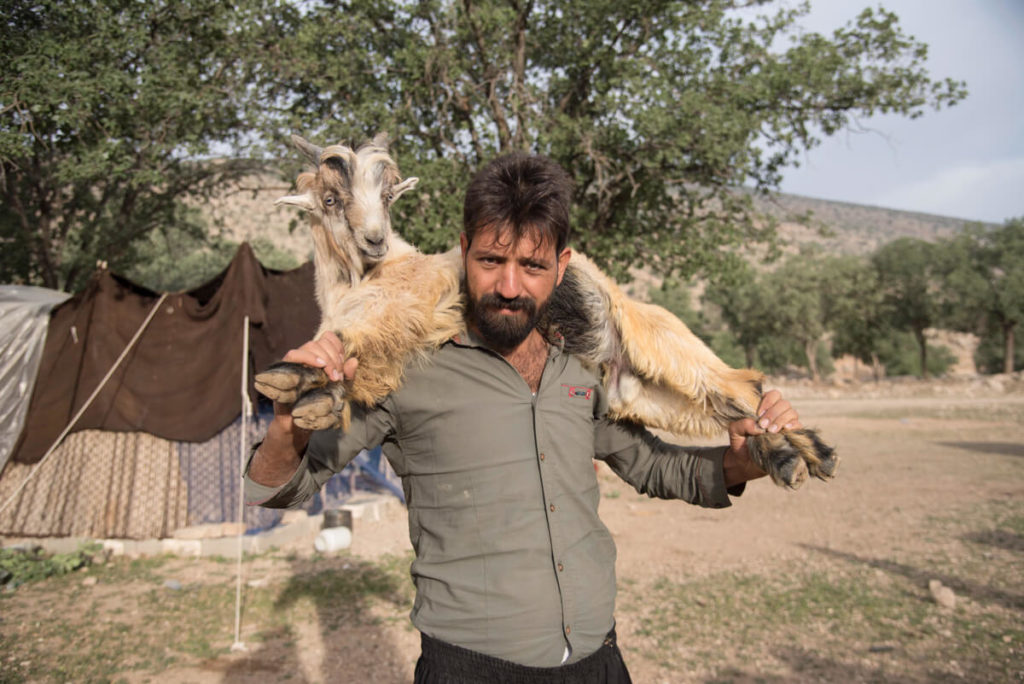
Therefore, it’s not surprising at all that, for the last few decades, many Qashqai have left their traditional life and moved to different towns and cities.
A nomad: For many of us, life is very difficult here, you know?
Me: But do they like it? Why are not they moving to the cities?

According to my translator, many nomads would like to quit this life but they just can’t.
The problem is that many of them are illiterate, so they could not find any good job. Raising flocks is what they are best at and, since they can’t move to the city with their animals, they need to remain with the nomad life.
Nevertheless, many Qashqai people are happy with this lifestyle because they are very proud of continuing a tradition which has been going for many generations.
The daily routine of the Iranian nomads is pretty much the same as that of the nomads I met while traveling in Kyrgyzstan and the rest of Central Asia.
They wake up in the morning with the sunrise and men leave with their herds, while women stay at the camp, working on the daily household chores.

They raise goats, sheep and chickens and their diet is based on the products from these three animals.
If you stay there, you are likely to have fresh milk, as well as home-made yogurt and cheese, of course. The rest of the food, including rice and vegetables, they buy in the markets from the surrounding cities.
However, culturally, one strong difference from the Central Asian nomads is that Qashqai tribes are much more conservative and paternalistic.
Whereas, while I was trekking in Kyrgyzstan, I hung out and shared meals with many women nomads; with the Iranian nomads, there was a clear sex segregation, like in most traditional Muslim villages.
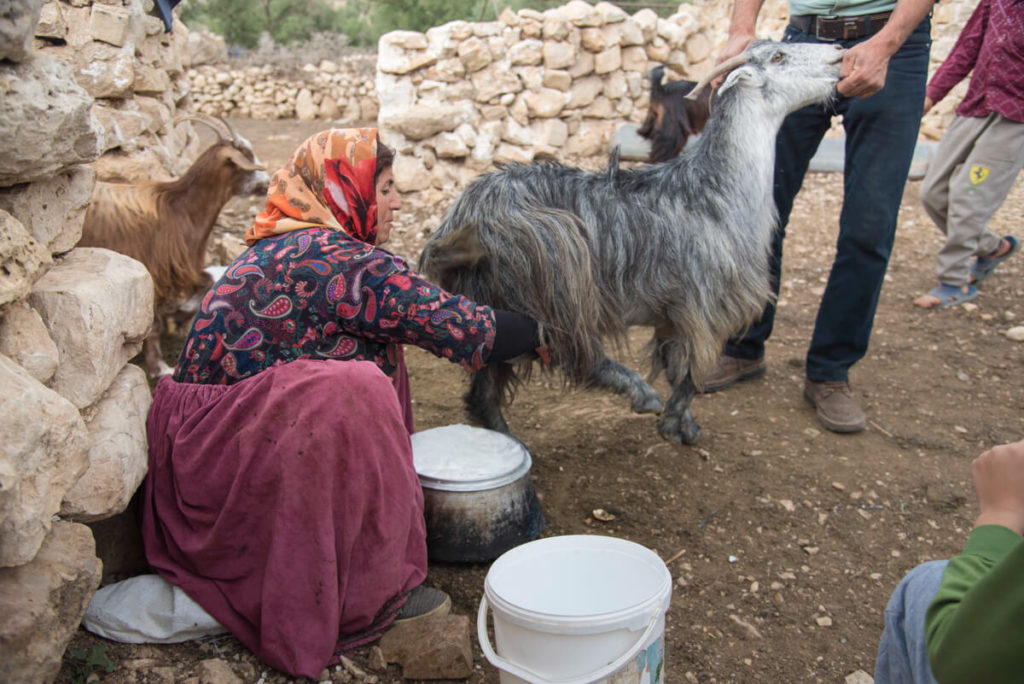
More information about meeting Qashqai people
📢 In my Travel Resources Page you can find the list of all the sites and services I use to book hotels, tours, travel insurance and more.
When to visit the Iranian nomads
Like I said, the Iranian nomads keep moving across the Zagros Mountains, so you can visit them at any time of the year, depending on where you are.
However, the camps around Shiraz are the most easily accessible, plus they are set up for a longer period of time, spring and autumn.
Should you visit them on a tour or not?
Well, that’s a very good question. While I am not a big fan of tours, the truth is that nomads don’t live in one fixed place but they just settle down in random places in the mountains, which means that you need to know where they are and, definitely, have a car.
Moreover, if you had a vehicle and knew where to go, you could have some random encounters, of course. Actually, the Qashqai nomads are very hospitable and, if you show up, you are most likely to be invited to have some tea.
However, the nomads don’t speak English at all and, if you want to have a full experience, meaning staying one or two days with them, someone should definitely arrange it for you in advance.
Key2Persia arranged the trip for me and provided me with a tour guide who was a real Qashqai whose parents quit the nomadic life 15 years ago but he had many relatives who were still nomads. We stayed with his cousins and it was indeed a great experience.
Read More Travel Stories
- A City Guide to Mosul
- Iron Ore Train Guide in Mauritania
- Travel Guide to Aleppo
- Hitchhiking and Backpacking in Saudi Arabia
- Is it Ethical to Visit Saudi Arabia as a Tourist
- Palestinian Refugee Camp in Bethlehem
- Tales of Nubian People
- Visiting Kibera Slums in Kenya
- Visiting Syrian Refugee Camp
Also check our travel guide to Iran.
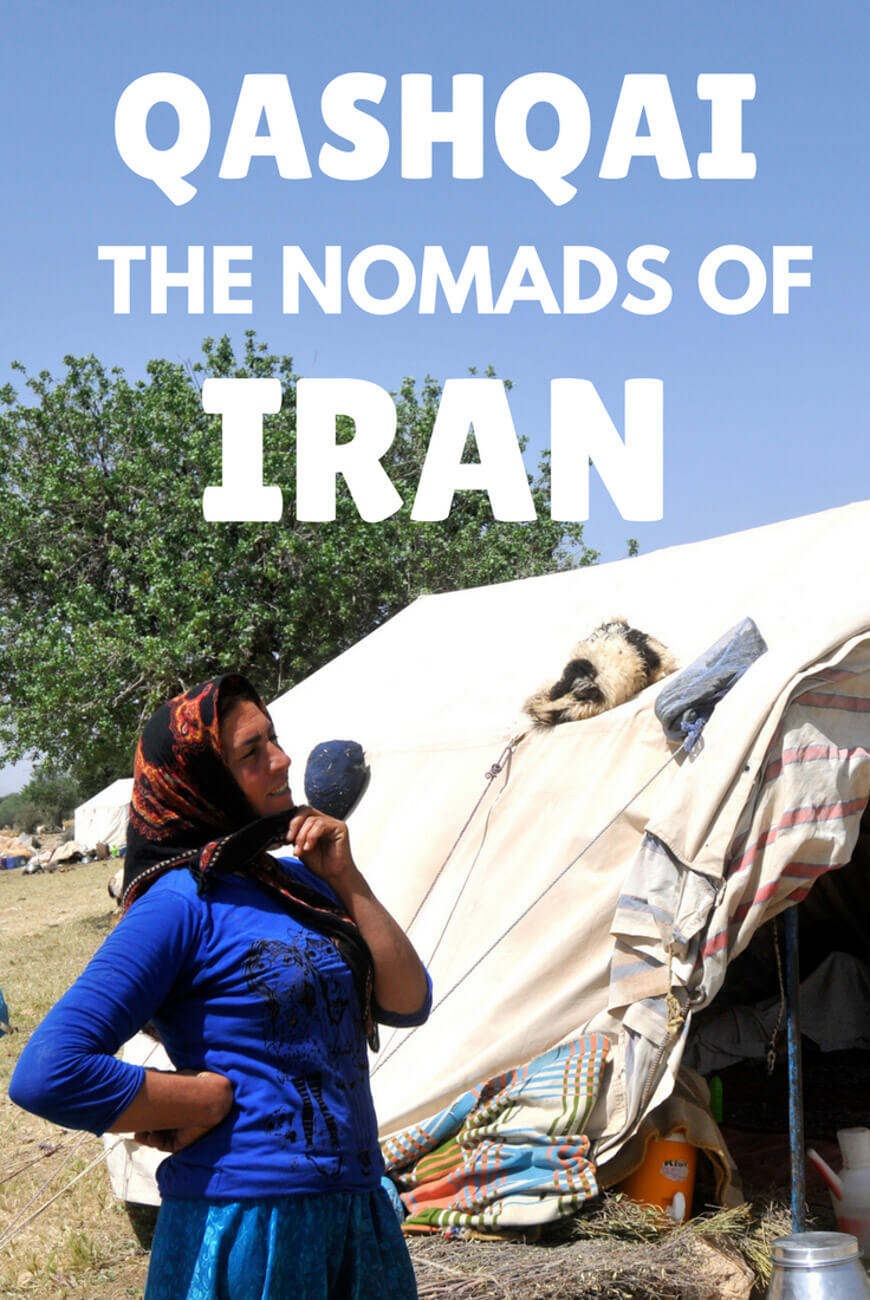
32 comments
Hi Joan,
Unfortunately I didn’t take the time to go to the Zagros Mountains on my Iran trips (there is simply that much you can do, and Iran has a lot to offer).
That indeed looks like a really cool experience. On a next trips, maybe…
Thanks for sharing
Cheers
Gilles
Cheers Gilles! Yeah, Iran is a destination which you need to visit several times in order to see everything!
Great to be so far off the beaten track. My parents lived for a while in the Mountains of Saudi. And I know my mum loved travelling round meeting the nomads who lived in that region
Hi Fiona, I think there’s nothing more off the beaten track than the mountains of Saudi! I believe the nomads your mom met were bedouins, right? Thanks for your message!
Great experience! Nice post and beautiful photos 🙂 Thanks for sharing with us
Glad you liked it Hra 🙂
Joan! Sóc el Maso! Ostia tiu, quin gran blog! Aquest estiu anem amb l’Anna a l’Iran i estava preparant la ruta i m’he llegit moltes entrades teves. Està molt molt bé! També m’estava llegint aquest blog: https://www.lostwithpurpose.com/off-the-beaten-track-iran/ i he vist que et recomanen.
Doncs res tiu, que faré cas de totes les teves recomanacions i em posaré en contacte amb l’Ali.
Felicitats pel blog i molta sort!
Per cert, per on pares ara?
Hola Maso tiu! Perdona pel retard en contestar! Puta mare que vagis a l’Irán, t’ho passaràs de conya. Quan de temps hi vas? Intenta visita r més la part del nord que la del sud, perquè sinó et moriràs de calor! Ara mateix estic a Roses, m’estaré fins el dia 17 i després a voltar durant un temps. Tu a on estàs ara? Vas tornar aquí o et vas quedar per Alemanya! Salut company!
Ei!doncs vaig tornar a BCn tiu i ara ja hi estic tot instal.lat. a l’Iran hi anem 27 dies, i sisi tenim pensat fer el nord fins a Tabriz, baixar pel Kurdistan fins Kermanshash, i Dllà fer Isfahan, Shiraz, Yazd i anar pujant fins a Teheran. Ja he vist que estas per Israel! Bueno mestre, cuida’t!
Sí! Bueno ara ja estic a Palestina. D’aquí directe al Pakistan! Passa-ho bé! Estem en contacte, salut!
Company, prova .com en comptes de .es per l’email de l’Ali. Espero que encara estiguis a temps
Interesting article, as these people don’t see many travelers as yourself. Three months between you and someone else is a while. They look happy and rolled out the red carpet for you. Thanks for sharing your experience.
Hi Sara, yes 3 months is a long time! On the one hand, it’s a good thing for us because you get to see their authentic life far away from tourists. On the other hand, it’s bad for them because these people are struggling a lot!
Wow, this seems pretty remote so it’s no wonder that the last time they saw a tourist was over 3 months. I commend you for getting out there and seeing new things and meeting new people. I understand how you felt after you asked why they didn’t move and it’s nice to learn lessons on the road. I’m sure it will stick with you as you continue your journey. We’ve all learned them along the way!
Yes, these are definitely some of the most interesting group of people I’ve met lately and one of my highlights in Iran!
Wow what an incredible experience you had and how lucky you are to have found such a nice guide. Living this nomadic life seems very difficult and I wouldn’t have though they were many people actually still doing it.
Ali is the most amazing man ever! There are actually nomads in some many countries, especially in those ones where the weather conditions are hard. The Arab countries are plenty of them: in Jordan and Morocco especially!
Very interesting. I knew nothing about the Qashqai people. It’s great to learn some of the details of their lives. Thanks for sharing.
Glad you enjoyed it Megan 😉 !
that’s what I call a true deep insight inside another culture! This interview-dialogue is great and can tell more than an entire guide about some aspects of a country sub culture! Go on like this!
Hello Sabrina, glad you liked it. I wrote it as an interview dialogue to make it a little bit different this time! thanks!
Interesting perspective! I can see why there would be a conflict between living like your ancestors traditionally lived and a younger generation who want to be settled. It’s so hard to be truly isolated from outside influences these days (even if you are illiterate).
Yes! And new technologies are not helping at all!
Hey guys . I am qashqai . My name is dayan. We are turk
Qashqai have their own culture and music.
We care about humanity. We care about religion. But humanity is more valuable for us
Our kindness has nothing to do with religion. We are not fighting. We do not deceive strangers. Come to
Iran and experience new life . We love every body
My instqgram id: aloneboyda
Hi!
Very interesting story.
I would like to travel with Ali and sent him a mail at the address you listed in the article. But the mail address is unknown and I just for the mail back.
Do you maybe know of a new mail address?
Thank you very much
Hi! Unfortunately, it seems that Ali gave me the wrong adress so there’s not much I can do 🙁
Hi joan,
Sounds interesting. I ‘m thinking of visiting Iran but not sure if its best to wait until September now as it’s starting to heat up now.
My route would be , fly into Tehran, head north to Tabriz (is that where rock caves are?), then back south to Shiraz, Yazd (maybe detour to Abyaneh village ) Isfahan, and finally back to Tehran.
I asked you for advice on Sudan visa few months back. just to let you know I got one at Dublin embassy in the end, no problems.
Had a great time in Sudan, travelled up from Khartoum up the Nile to Wadi Halfa and into Egypt. Those lokanda’s are something else, eh?I got bit to hell in one place by bed bugs, but there again I only paid 10m Sudan Pounds for a bed!! LOL– Money had almost run out and as you know, ATM’s no use there!
Hi Tony! Thanks for your message 🙂 Iran is so geographically diverse so it really depends on where you go. Tabriz might be good in June and even summer but winter must be freezing and perhaps snow too. The Persian cities you mention are unbearable during the summer months but if you go now, they might be OK. I was in Yazd a few weeks ago and the weather was gorgeous, even a bit chilly at night. Good to know about Dublin embassy. Did they request a LOI or any other special requirement? HAHA, yeah I bet that for 10SP you can’t ask for more!
that should have read, ”10 Sudan pounds for a bed” !! For 10m I would expect the presidential palace lol
Hi Joan.
No letter of invitation, I just had an email from Bougainville hotel to say they had a Room for me on on the day I flew in from Addis Ababa. I hadn’t paid for it so could have quite easily changed to a cheaper place ( it’s $60us a night there!)
I was using UK passport too ,so thought I might get some grief but actually got the visa within an hour. Cost 50 Euro.
Hi, just a correction about their origins… you said they’re from Turkey, but they’re not. I understand it’s confusing though. Some Iranians call ourselves Turk, but it’s not to be mistaken with being Turkish. Turk is an ethnic group with origins in Central Asia, and there are actually many different Turkic tribal groups – the Qashqai are one of them. The language is also similar to Turkish, which is confusing again. Ancestrally, the Qashqai are descended from the same line of Central Asian nomads that still roam there today. My source is that I’m a Turk Iranian 🙂
thanks for the clarification, Lisa 🙂